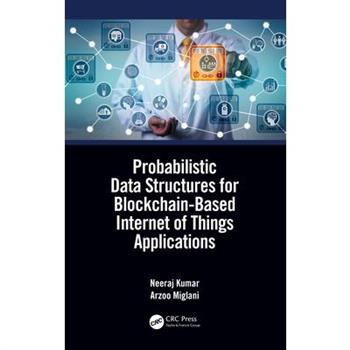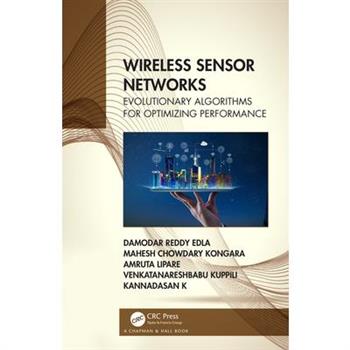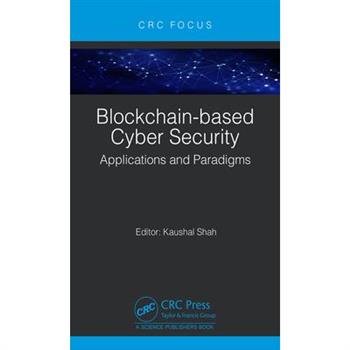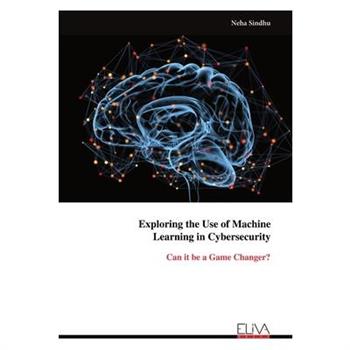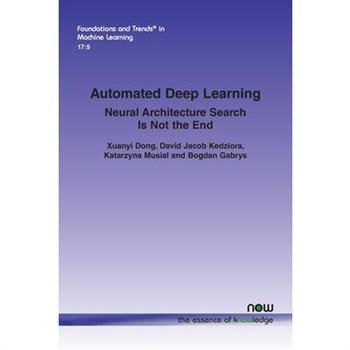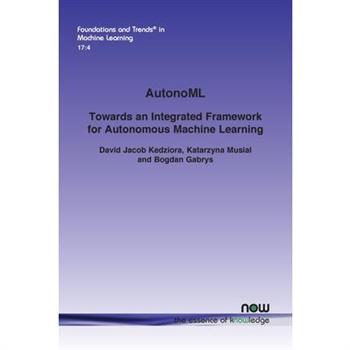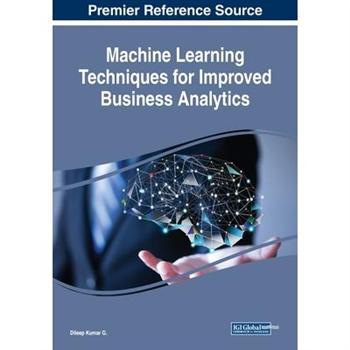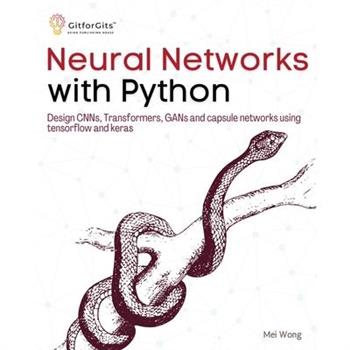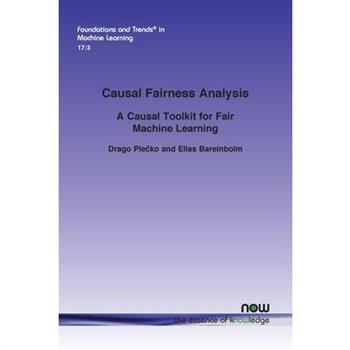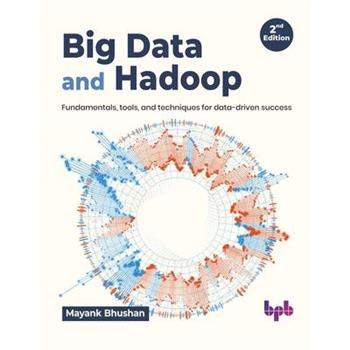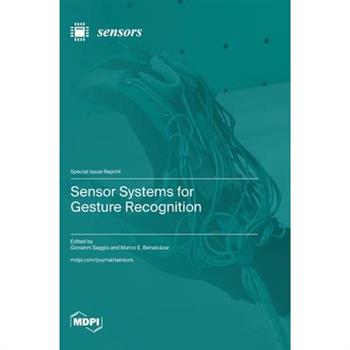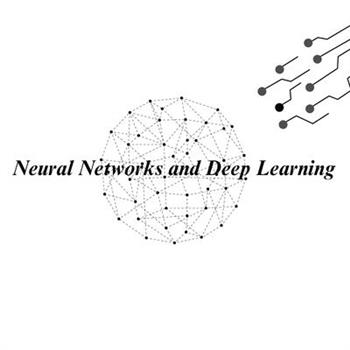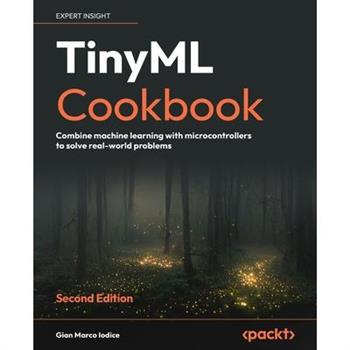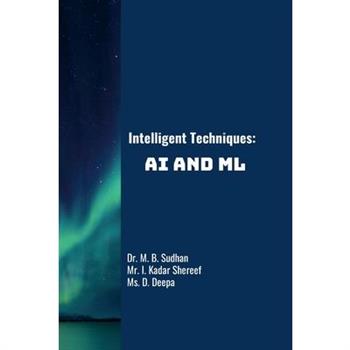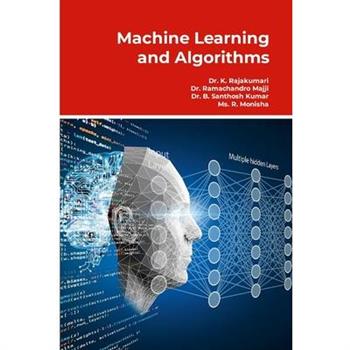Probabilistic Data Structures for Blockchain-Based Internet of Things Applications
This book covers theory and practical knowledge of Probabilistic data structures (PDS) and Blockchain (BC) concepts. It introduces the applicability of PDS in BC to technology practitioners and explains each PDS through code snippets and illustrative examples. Further, it provides references for the applications of PDS to BC along with implementation codes in python language for various PDS so that the readers can gain confidence using hands on experience. Organized into five sections, the book covers IoT technology, fundamental concepts of BC, PDS and algorithms used to estimate membership query, cardinality, similarity and frequency, usage of PDS in BC based IoT and so forth.
AI in Manufacturing and Green Technology
This book focuses on environmental sustainability by employing elements of engineering and green computing through modern educational concepts and solutions. It visualizes the potential of artificial intelligence, enhanced by business activities and strategies for rapid implementation, in manufacturing and green technology. This book covers utilization of renewable resources and implementation of the latest energy-generation technologies. It discusses how to save natural resources from depletion and illustrates facilitation of green technology in industry through usage of advanced materials. The book also covers environmental sustainability and current trends in manufacturing. The book provides the basic concepts of green technology, along with the technology aspects, for researchers, faculty, and students.
Convergence of Blockchain Technology and E-Business
The purpose of this edited book is to provide the relevant technologies and case studies in a concise format that will simplify and streamline the processing of blockchain. The goal is for the contents of this book to change the way business transformations are conducting in economic and social systems.
Wireless Sensor Networks
With the evolution of soft computing, bio-inspired algorithms have gained more attention in recent years. This book is aimed at undergraduates, graduates and researchers working in the domain of wireless networks.
Python Machine Learning By Example - Fourth Edition
Author Yuxi (Hayden) Liu teaches machine learning from the fundamentals to building NLP transformers and multimodal models with best practice tips and real-world examples using PyTorch, TensorFlow, scikit-learn, and pandasKey Features: - Discover new and updated content on NLP transformers, PyTorch, and computer vision modeling- Includes a dedicated chapter on best practices and additional best practice tips throughout the book to improve your ML solutions- Implement ML models, such as neural networks and linear and logistic regression, from scratch- Purchase of the print or Kindle book includes a free PDF copyBook Description: The fourth edition of Python Machine Learning by Example is a comprehensive guide for beginners and experienced ML practitioners who want to learn more advanced techniques like multimodal modeling. Written by experienced machine learning author and ex-Google ML engineer Yuxi (Hayden) Liu, this edition emphasizes best practices, providing invaluable insights for ML engineers, data scientists, and analysts.Explore advanced techniques, including two new chapters on natural language processing transformers with BERT and GPT, and multimodal computer vision models with PyTorch and Hugging Face. You'll learn key modeling techniques using practical examples, such as predicting stock prices and creating an image search engine.This hands-on machine learning book navigates through complex challenges, bridging the gap between theoretical understanding and practical application. Elevate your machine learning and deep learning expertise, tackle intricate problems, and unlock the potential of advanced techniques in machine learning with this authoritative guide.What You Will Learn: - Follow machine learning best practices across data preparation and model development- Build and improve image classifiers using Convolutional Neural Networks (CNNs) and transfer learning- Develop and fine-tune neural networks using TensorFlow and PyTorch- Analyze sequence data and make predictions using RNNs, transformers, and CLIP- Build classifiers using SVMs and boost performance with PCA- Avoid overfitting using regularization, feature selection, and moreWho this book is for: This expanded fourth edition is ideal for data scientists, ML engineers, analysts, and students with Python programming knowledge. The real-world examples, best practices, and code prepare anyone undertaking their first serious ML project.Table of Contents- Getting Started with Machine Learning and Python- Building a Movie Recommendation Engine- Predicting Online Ad Click-Through with Tree-Based Algorithms- Predicting Online Ad Click-Through with Logistic Regression- Predicting Stock Prices with Regression Algorithms- Predicting Stock Prices with Artificial Neural Networks- Mining the 20 Newsgroups Dataset with Text Analysis Techniques- Discovering Underlying Topics in the Newsgroups Dataset with Clustering and Topic Modeling- Recognizing Faces with Support Vector Machine- Machine Learning Best Practices- Categorizing Images of Clothing with Convolutional Neural Networks- Making Predictions with Sequences Using Recurrent Neural Networks- Advancing Language Understanding and Generation with Transformer Models- Building An Image Search Engine Using Multimodal Models- Making Decisions in Complex Environments with Reinforcement Learning
Kinetic Studies in GeO2/Ge System
Kinetic Studies in GeO2/Ge System: A Retrospective from 2021 investigates reaction kinetics in GeO2/Ge systems, aiming to demonstrate the fundamentals of the GeO2/Ge interface and to give insight into the distinctive features and performance of Ge (germanium) applied to advanced complementary metal oxide semiconductor (CMOS) devices.This book first reviews the development of MOS technology and discusses the potentials of emerging Ge and the challenges facing it as a contentious channel material, once promising to replace Si (silicon) for advanced nodes. The study systematically analyzes the following aspects of GeO2/Ge stacks that will shed light on the characteristics and reaction principles of the system: GeO2/Ge degradation, Ge passivation techniques, desorption kinetics of GeO from GeO2/Ge, the relationship between GeO2 crystallization and GeO2/Ge interface reaction, and the oxidation kinetics of Ge. Based on findings from the intrinsic properties of GeO2/Ge, the author also compares it with prevalent SiO2/Si systems and demonstrates the essential differences between the two, contributing to quality control, process optimization, and technology advancements of GeO2/Ge.The book will be a useful reference for researchers, professionals, and students interested in electronic materials, condenser matter physics, microelectronic engineering, and semiconductors.
Big Data and Edge Intelligence for Enhanced Cyber Defense
An unfortunate outcome of the growth of the Internet and mobile technologies has been the challenge of countering cybercrime. This book introduces and explains the latest trends and techniques of edge artificial intelligence (EdgeAI) intended to help cyber security experts design robust cyber defense systems (CDS), including host-based and network-based intrusion detection system and digital forensic intelligence. This book discusses the direct confluence of EdgeAI with big data, as well as demonstrating detailed reviews of recent cyber threats and their countermeasure. It provides computational intelligence techniques and automated reasoning models capable of fast training and timely data processing of cyber security big data, in addition to other basic information related to network security. In addition, it provides a brief overview of modern cyber security threats and outlines the advantages of using EdgeAI to counter these threats, as well as exploring various cyber defense mechanisms (CDM) based on detection type and approaches. Specific challenging areas pertaining to cyber defense through EdgeAI, such as improving digital forensic intelligence, proactive and adaptive defense of network infrastructure, and bio-inspired CDM, are also discussed. This book is intended as a reference for academics and students in the field of network and cybersecurity, particularly on the topics of intrusion detection systems, smart grid, EdgeAI, and bio-inspired cyber defense principles. The front-line EdgeAI techniques discussed will also be of use to cybersecurity engineers in their work enhancing cyber defense systems.
The Role of the Internet of Things (IoT) in Biomedical Engineering
This volume introduces the key evolving applications of IoT in the medical field for patient care delivery through the usage of smart devices. It shows how IoT opens the door to a wealth of relevant healthcare information through real-time data analysis as well as testing, providing reliable and pragmatic data that yields enhanced solutions and discovery of previously undiscovered issues.This new volume discusses IoT devices that are deployed for enabling patient health tracking, various emergency issues, smart administration of patients, etc. It looks at the problems of cardiac analysis in e-healthcare, explores the employment of smart devices aimed for different patient issues, and examines the usage of Arduino kits where the data can be transferred to the cloud for internet-based uses. The volume also considers the roles of IoT in electroencephalography (EEG) and magnetic resonance imaging (MRI), which play significant roles in biomedical applications. This book also incorporates the use of IoT applications for smart wheelchairs, telemedicine, GPS positioning of heart patients, smart administration with drug tracking, and more.
High-Performance Medical Image Processing
The processing of medical images in a reasonable timeframe and with high definition is very challenging. This volume helps to meet that challenge by presenting a thorough overview of medical imaging modalities, its processing, high-performance computing, and the need to embed parallelism in medical image processing techniques to achieve efficient and fast results.With contributions from researchers from prestigious laboratories and educational institutions, High-Performance Medical Image Processing provides important information on medical image processing techniques, parallel computing techniques, and embedding parallelism in different image processing techniques. A comprehensive review of parallel algorithms in medical image processing problems is a key feature of this book. The volume presents the relevant theoretical frameworks and the latest empirical research findings in the area and provides detailed descriptions about the diverse high-performance techniques.Topics discussed include parallel computing, multicore architectures and their applications in image processing, machine learning applications, conventional and advanced magnetic resonance imaging methods, hyperspectral image processing, algorithms for segmenting 2D slices for 3D viewing, and more. Case studies, such as on the detection of cancer tumors, expound on the information presented.Key features: Provides descriptions of different medical imaging modalities and their applications Discusses the basics and advanced aspects of parallel computing with different multicore architectures Expounds on the need for embedding data and task parallelism in different medical image processing techniques Presents helpful examples and case studies of the discussed methods This book will be valuable for professionals, researchers, and students working in the field of healthcare engineering, medical imaging technology, applications in machine and deep learning, and more. It is also appropriate for courses in computer engineering, biomedical engineering and electrical engineering based on artificial intelligence, parallel computing, high performance computing, and machine learning and its applications in medical imaging.
Explainable Artificial Intelligence for Autonomous Vehicles
Explainable AI for Autonomous Vehicles: Concepts, Challenges, and Applications is a comprehensive guide to developing and applying explainable artificial intelligence (XAI) in the context of autonomous vehicles. It begins with an introduction to XAI and its importance in developing autonomous vehicles. It also provides an overview of the challenges and limitations of traditional black-box AI models and how XAI can help address these challenges by providing transparency and interpretability in the decision-making process of autonomous vehicles. The book then covers the state-of-the-art techniques and methods for XAI in autonomous vehicles, including model-agnostic approaches, post-hoc explanations, and local and global interpretability techniques. It also discusses the challenges and applications of XAI in autonomous vehicles, such as enhancing safety and reliability, improving user trust and acceptance, and enhancing overall system performance. Ethical and social considerations are also addressed in the book, such as the impact of XAI on user privacy and autonomy and the potential for bias and discrimination in XAI-based systems. Furthermore, the book provides insights into future directions and emerging trends in XAI for autonomous vehicles, such as integrating XAI with other advanced technologies like machine learning and blockchain and the potential for XAI to enable new applications and services in the autonomous vehicle industry. Overall, the book aims to provide a comprehensive understanding of XAI and its applications in autonomous vehicles to help readers develop effective XAI solutions that can enhance autonomous vehicle systems' safety, reliability, and performance while improving user trust and acceptance.This book: Discusses authentication mechanisms for camera access, encryption protocols for data protection, and access control measures for camera systems. Showcases challenges such as integration with existing systems, privacy, and security concerns while implementing explainable artificial intelligence in autonomous vehicles. Covers explainable artificial intelligence for resource management, optimization, adaptive control, and decision-making. Explains important topics such as vehicle-to-vehicle (V2V) communication, vehicle-to-infrastructure (V2I) communication, remote monitoring, and control. Emphasizes enhancing safety, reliability, overall system performance, and improving user trust in autonomous vehicles. The book is intended to provide researchers, engineers, and practitioners with a comprehensive understanding of XAI's key concepts, challenges, and applications in the context of autonomous vehicles. It is primarily written for senior undergraduate, graduate students, and academic researchers in the fields of electrical engineering, electronics and communication engineering, computer science and engineering, information technology, and automotive engineering.
Soft Computing in Materials Development and Its Sustainability in the Manufacturing Sector
This book focuses on the application of soft computing in materials and manufacturing sectors with the objective to offer an intelligent approach to improve the manufacturing process, material selection and characterization techniques for developing advanced new materials. It unveils different models and soft computing techniques applicable in the field of advanced materials and solves the problems to help the industry and scientists to develop sustainable materials for all purposes. The book focuses on the overall well-being of the environment for better sustenance and livelihood. Firstly, the authors discuss the implementation of soft computing in the various areas of engineering materials. They also review the latest intelligent technologies and algorithms related to the state-of-the-art methodologies of monitoring and effective implementation of sustainable engineering practices. Finally the authors examine the future generation of sustainable and intelligent monitoring techniques beneficial for manufacturing, and cover novel soft computing techniques for the purpose of effective manufacturing processes at par with the standards laid down by the International Standards of Organization (ISO). This book is intended for academics and researchers from all the fields of engineering interested in joining interdisciplinary initiatives on soft computing techniques for advanced materials and manufacturing.
Ai-Centric Smart City Ecosystems
Over the next few years, smart city technologies will be rolled out, and the IoT devices and AI-centric systems will provide even more far-reaching connectivity. This book presents various concepts in the design and development of a smart city and methodologies and solutions involved in designing contemporary infrastructure for building smart cities around the world. The book will focus mainly on six areas of smart city infrastructures: smart city entities, IoT-based solutions, AI-centric control systems, smart systems, cybersecurity mechanisms, data science, and cloud computing for the deployment of the smart ecosystem.AI-Centric Smart City Ecosystem: Technologies, Design, and Implementation will discuss the role of AI-centric innovative systems and beyond intelligent solutions in the smart city framework. Readers will discover how to apply design principles and technologies for operating intelligent cities and develop an understanding of how to integrate AI-based control systems to make systems smarter. The book will present various concepts in the design and development of smart cities and methodologies and solutions involved in designing modern infrastructure. Also, readers can discover how to develop applications and connect the IoT devices for collecting and mining real-time data and uncover the challenges and techniques for improving the automatic operation in the smart city by using high-tech solutions.This book is intended to serve the needs of the industry, engineers, professionals, researchers, and master's and doctoral students studying emerging technologies in smart city ecosystems.
Next-Gen Technologies in Computational Intelligence
The Proceeding includes the research contribution from the International Conference on Next-Gen Technologies in Computational Intelligence (NGTCA 2023) held on March 24th 2023 at Vels Institute of Science, Technology and Advanced Studies. NGCTA 2023 is the flagship conference of the Computer Society of India (Region 7). Computer Society of India (CSI) is the largest association of IT professionals in India. CSI is a non-profit organization established in 1965 and its members are committed to the advancement of theory and practice of Computer Engineering and Technology Systems. The Mission of CSI is to facilitate research, knowledge sharing, learning, and career enhancement for all categories of IT professionals, while simultaneously inspiring and nurturing new entrants into the industry and helping them to integrate into the IT community. At present, CSI has 76chapters across India, over 550 student branches with 1,00,000 plus members. It serves its members through technical events, seminars, workshops, conferences, publications & journals, research projects, competitions, special interest groups, awards & recognitions, etc. Various CSI chapters conduct Research Convention every year.
Recent Advances in Science, Engineering & Technology
The advances in technology, engineering and science are necessary for better and sustailable life.
Feature Selection and Feature Extraction in Machine Learning- Based IoT Intrusion Detection System
"In a world increasingly reliant on Internet of Things (IoT) devices, ensuring their security is paramount. Yet, these very devices are vulnerable to cyberattacks, posing significant threats to individuals and organizations alike. To combat this, machine learning has emerged as a powerful tool for network intrusion detection in IoT environments.Delving deep into this intersection of cybersecurity and machine learning, this book presents a comprehensive exploration of feature reduction techniques for IoT network intrusion detection. Drawing from extensive research, it offers a meticulous comparison of feature extraction and selection methods within a machine learning-based attack classification framework.Through rigorous analysis of performance metrics such as accuracy, f1-score, and runtime, the book sheds light on the efficacy of these techniques on the heterogeneous IoT dataset known as Network TON-IoT. Unveiling key insights, it reveals that while feature extraction tends to outperform feature selection in detection performance, the latter exhibits advantages in model training and inference time.But the findings don't stop there. The book delves deeper into the nuances of IoT security, addressing the challenges posed by computational resource constraints. It underscores the importance of feature reduction in constructing lightweight yet effective intrusion detection models tailored for IoT scenarios.Moreover, the book offers practical guidance for selecting intrusion detection methods tailored to specific IoT environments. By analyzing the trade-offs between feature extraction and selection, it equips readers with the knowledge to navigate the complexities of IoT security."
Blockchain-based Cyber Security
The book focuses on a paradigm of blockchain technology that addresses cyber security. The challenges related to cyber security and the solutions based on Software Defined Networks are discussed. The book presents solutions to deal with cyber security attacks by considering real-time applications based on IoT, Wireless Sensor Networks, Cyber-Physical Systems, and Smart Grids. The book is useful for academicians and research scholars worldwide working in cyber security. It is also useful for industry experts working in cyber security.
Quality Assessment and Security in Industrial Internet of Things
The book highlights authentication and trust evaluation models in the Industrial Internet of Things. It further discusses data breaches and security issues in various Artificial Intelligence-enabled systems and uses Blockchain to resolve the challenges faced by the industrial Internet of Things.
Modular Synthesis
Modular Synthesis: Patching Machines and People brings together scholars, artists, composers, and musical instrument designers in an exploration of modular synthesis, an unusually multifaceted musical instrument that opens up many avenues for exploration and insight, particularly with respect to technological use, practice, and resistance.Through historical, technical, social, aesthetic, and other perspectives, this volume offers a collective reflection on the powerful connections between technology, creativity, culture, and personal agency. Ultimately, this collection is about creativity in a technoscientific world and speaks to issues fundamental to our everyday lives and experiences, by providing insights into the complex relationships between content creators, the technologies they use, and the individuals and communities who design and engage with them.With chapters covering VCV Rack, modular synthesis, instrument design, and the histories of synthesizer technology, as well as interviews with Dave Rossum, Corry Banks, Meng Qi, and Dani Dobkin, among others, Modular Synthesis is recommended reading for advanced undergraduates, researchers, and practitioners of electronic music and music technology. Chapter 3 of this book is freely available as a downloadable Open Access PDF at http: //www.taylorfrancis.com under a Creative Commons Attribution-Non Commercial-No Derivatives (CC-BY-NC-ND) 4.0 license.
The Machine Learning Solutions Architect Handbook - Second Edition
Design, build, and secure scalable machine learning (ML) systems to solve real-world business problems with Python and AWSPurchase of the print or Kindle book includes a free PDF eBookKey FeaturesGo in-depth into the ML lifecycle, from ideation and data management to deployment and scalingApply risk management techniques in the ML lifecycle and design architectural patterns for various ML platforms and solutionsUnderstand the generative AI lifecycle, its core technologies, and implementation risksBook DescriptionDavid Ping, Head of GenAI and ML Solution Architecture for global industries at AWS, provides expert insights and practical examples to help you become a proficient ML solutions architect, linking technical architecture to business-related skills.You'll learn about ML algorithms, cloud infrastructure, system design, MLOps, and how to apply ML to solve real-world business problems. David explains the generative AI project lifecycle and examines Retrieval Augmented Generation (RAG), an effective architecture pattern for generative AI applications. You'll also learn about open-source technologies, such as Kubernetes/Kubeflow, for building a data science environment and ML pipelines before building an enterprise ML architecture using AWS. As well as ML risk management and the different stages of AI/ML adoption, the biggest new addition to the handbook is the deep exploration of generative AI.By the end of this book, you'll have gained a comprehensive understanding of AI/ML across all key aspects, including business use cases, data science, real-world solution architecture, risk management, and governance. You'll possess the skills to design and construct ML solutions that effectively cater to common use cases and follow established ML architecture patterns, enabling you to excel as a true professional in the field.What you will learnApply ML methodologies to solve business problems across industriesDesign a practical enterprise ML platform architectureGain an understanding of AI risk management frameworks and techniquesBuild an end-to-end data management architecture using AWSTrain large-scale ML models and optimize model inference latencyCreate a business application using artificial intelligence services and custom modelsDive into generative AI with use cases, architecture patterns, and RAGWho this book is forThis book is for solutions architects working on ML projects, ML engineers transitioning to ML solution architect roles, and MLOps engineers. Additionally, data scientists and analysts who want to enhance their practical knowledge of ML systems engineering, as well as AI/ML product managers and risk officers who want to gain an understanding of ML solutions and AI risk management, will also find this book useful. A basic knowledge of Python, AWS, linear algebra, probability, and cloud infrastructure is required before you get started with this handbook.Table of ContentsNavigating the ML Lifecycle with ML Solutions ArchitectureExploring ML Business Use CasesExploring ML AlgorithmsData Management for MLExploring Open-Source ML LibrariesKubernetes Container Orchestration Infrastructure ManagementOpen-Source ML PlatformsBuilding a Data Science Environment using AWS ML ServicesDesigning an Enterprise ML Architecture with AWS ML ServicesAdvanced ML EngineeringBuilding ML Solutions with AWS AI ServicesAI Risk ManagementBias, Explainability, Privacy, and Adversarial Attacks(N.B. Please use the Read Sample option to see further chapters)
Advances in Networks, Intelligence and Computing
The year 2023 marks the 100th birth anniversary of E.F. Codd (19 August 1923 - 18 April 2003), a computer scientist, who while working for IBM invented the relational model for database management, the theoretical basis for relational databases and relational database management systems. He made other valuable contributions to computer science but the relational model, a very influential general theory of data management, remains his most mentioned, analyzed, and celebrated achievement. School of Computer Application, under the aegis of Lovely Professional University, pays homage to this great scientist of all times by hosting "CODD100 - International Conference on Networks, Intelligence and Computing (ICONIC-2023)".
Data-Driven Systems and Intelligent Applications
This book comprehensively discusses basic data-driven intelligent systems, the methods for processing the data, and cloud computing with artificial intelligence. It presents fundamental and advanced techniques used for handling large user data, and for the data stored in the cloud. It further covers data-driven decision-making for smart logistics and manufacturing systems, network security, and privacy issues in cloud computing.This book: Discusses intelligent systems and cloud computing with the help of artificial intelligence and machine learning. Showcases the importance of machine learning and deep learning in data-driven and cloud-based applications to improve their capabilities and intelligence. Presents the latest developments in data-driven and cloud applications with respect to their design and architecture. Covers artificial intelligence methods along with their experimental result analysis through data processing tools. Presents the advent of machine learning, deep learning, and reinforcement technique for cloud computing to provide cost-effective and efficient services. The text will be useful for senior undergraduate, graduate students, and academic researchers in diverse fields including electrical engineering, electronics and communications engineering, computer engineering, manufacturing engineering, and production engineering.
Introduction to Python for Science and Engineering
Introduction to Python for Science and Engineering offers a quick and incisive introduction to the Python programming language for use in any science or engineering discipline. The approach is pedagogical and "bottom up," which means starting with examples and extracting more general principles from that experience. No prior programming experience is assumed.Readers will learn the basics of Python syntax, data structures, input and output, conditionals and loops, user-defined functions, plotting, animation, and visualization. They will also learn how to use Python for numerical analysis, including curve fitting, random numbers, linear algebra, solutions to nonlinear equations, numerical integration, solutions to differential equations, and fast Fourier transforms.Readers learn how to interact and program with Python using JupyterLab and Spyder, two simple and widely used integrated development environments.All the major Python libraries for science and engineering are covered, including NumPy, SciPy, Matplotlib, and Pandas. Other packages are also introduced, including Numba, which can render Python numerical calculations as fast as compiled computer languages such as C but without their complex overhead.
Leveraging Technology for Property Tax Management in Asia and the Pacific
This guidance note explains why countries in Asia and the Pacific should use technology including remote sensing and artificial intelligence to reform property tax management and help strengthen public finances. Outlining why property tax is a stable revenue source, it shows how technology can be used to roll out computerized mass appraisal systems, automated value modelling, and integrated land information systems. It assesses the complex hurdles and financial constraints facing countries and shows how ADB is helping better integrate land management into wider e-government systems.
Exploring the Use of Machine Learning in Cybersecurity
"Exploring the Use of Machine Learning in Cybersecurity: Can it be a Game Changer?" takes you on an exciting trip into the world of online security. This book dives into today's tech-driven world, where cyber threats are a big concern. But there's hope: ethical hackers are here to help by finding weaknesses in digital systems. However, regular security systems struggle to keep up with new tricks from bad actors. That's where our new system comes in. Using machine learning technology, it's super smart at spotting and stopping cyber-attacks. After lots of testing, it's proven to be incredibly accurate, way better than what's out there. Plus, it's not too hard on your computer and can adapt quickly. This breakthrough is a big deal for making sure our digital world stays safe from cyber baddies.
Automated Deep Learning
Deep learning (DL) has proven to be a highly effective approach for developing models in diverse contexts, including visual perception, speech recognition, and machine translation. Automated deep learning (AutoDL) endeavors to minimize the need for human involvement and is best known for its achievements in neural architecture search (NAS). In this monograph, the authors examine research efforts into automation across the entirety of an archetypal DL workflow. In so doing, they propose a comprehensive set of ten criteria by which to assess existing work in both individual publications and broader research areas, namely novelty, solution quality, efficiency, stability, interpretability, reproducibility, engineering quality, scalability, generalizability, and eco-friendliness. Aimed at students and researchers, this monograph provides an evaluative overview of AutoDL in the early 2020s, identifying where future opportunities for progress may exist.
AutonoML
Over the last decade, the long-running endeavour to automate high-level processes in machine learning (ML) has risen to mainstream prominence. Beyond this, an even loftier goal is the pursuit of autonomy, which describes the capability of the system to independently adjust an ML solution over a lifetime of changing contexts. This monograph provides an expansive perspective on what constitutes an automated/autonomous ML system. In doing so, the authors survey developments in hyperparameter optimisation, multicomponent models, neural architecture search, automated feature engineering, meta-learning, multi-level ensembling, dynamic adaptation, multi-objective evaluation, resource constraints, flexible user involvement, and the principles of generalisation. Furthermore, they develop a conceptual framework throughout to illustrate one possible way of fusing high-level mechanisms into an autonomous ML system. This monograph lays the groundwork for students and researchers to understand the factors limiting architectural integration, without which the field of automated ML risks stifling both its technical advantages and general uptake.
AI and Deep Learning Fundamentals
Welcome to the world of AI and Deep Learning! This book is a culmination of years of research, innovation, and practical insights into the fascinating realms of artificial intelligence and deep learning. In this rapidly evolving landscape, the convergence of neuroscience, mathematics, and computer science has sparked a revolution, redefining how machines perceive, learn, and interact with the world. As you embark on this educational journey, you'll delve into the foundational principles that underpin these technologies, unraveling complex concepts in a lucid and accessible manner. Whether you're an aspiring data scientist, a curious enthusiast, or a seasoned professional seeking to expand your knowledge, this book aims to equip you with a solid understanding of AI and deep learning essentials, empowering you to navigate the frontiers of innovation and contribute meaningfully to this transformative field. In this comprehensive guide, we traverse the landscape of artificial intelligence and deep learning, demystifying intricate theories and methodologies. From the fundamentals of neural networks to the practical applications in image recognition, natural language processing, and beyond, each chapter is meticulously crafted to provide a holistic view of these cutting-edge technologies. With a blend of theoretical foundations, real-world examples, and hands-on exercises, this book is designed to foster a deep comprehension of the core concepts while igniting your creativity to explore and innovate. Join us on this immersive journey, where you'll not only grasp the essence of AI and deep learning but also cultivate the skills to create intelligent systems that can revolutionize industries, redefine possibilities, and shape the future.
IoT Application of Machine Learning and Deep Learning
The fusion of the Internet of Things (IoT) with the prowess of Machine Learning and Deep Learning has ignited a revolution in the realm of technology. "IoT Application of Machine Learning and Deep Learning" is a comprehensive journey into this transformative synergy, designed to illuminate the convergence of these cutting-edge domains. This book aims to be a guiding light for enthusiasts, practitioners, and scholars navigating the dynamic landscape where IoT's interconnected devices meet the intelligence of machine and deep learning algorithms. In these pages, readers will embark on an expedition through the myriad applications, breakthroughs, and evolving possibilities of leveraging machine and deep learning within the IoT ecosystem. From unraveling the intricate mechanisms behind predictive analytics in IoT to exploring the robustness of neural networks in enhancing IoT security, this book unveils the intricate tapestry of possibilities awaiting exploration. Whether you're a seasoned professional seeking deeper insights or an eager learner venturing into this interdisciplinary realm, this book endeavors to be a beacon, illuminating the boundless potential at the nexus of IoT, Machine Learning, and Deep Learning.
Machine Learning Techniques for Improved Business Analytics
Analytical tools and algorithms are essential in business data and information systems. Efficient economic and financial forecasting in machine learning techniques increases gains while reducing risks. Providing research on predictive models with high accuracy, stability, and ease of interpretation is important in improving data preparation, analysis, and implementation processes in business organizations. Machine Learning Techniques for Improved Business Analytics is a collection of innovative research on the methods and applications of artificial intelligence in strategic business decisions and management. Featuring coverage on a broad range of topics such as data mining, portfolio optimization, and social network analysis, this book is ideally designed for business managers and practitioners, upper-level business students, and researchers seeking current research on large-scale information control and evaluation technologies that exceed the functionality of conventional data processing techniques.
Neural Networks with Python
"Neural Networks with Python" serves as an introductory guide for those taking their first steps into neural network development with Python. It's tailored to assist beginners in understanding the foundational elements of neural networks and to provide them with the confidence to delve deeper into this intriguing area of machine learning.In this book, readers will embark on a learning journey, starting from the very basics of Python programming, progressing through essential concepts, and gradually building up to more complex neural network architectures. The book simplifies the learning process by using relatable examples and datasets, making the concepts accessible to everyone. You will be introduced to various neural network architectures such as Feedforward, Convolutional, and Recurrent Neural Networks, among others. Each type is explained in a clear and concise manner, with practical examples to illustrate their applications. The book emphasizes the real-world applications and practical aspects of neural network development, rather than just theoretical knowledge.Readers will also find guidance on how to troubleshoot and refine their neural network models. The goal is to equip you with a solid understanding of how to create efficient and effective neural networks, while also being mindful of the common challenges that may arise.By the end of your journey with this book, you will have a foundational understanding of neural networks within the Python ecosystem and be prepared to apply this knowledge to real-world scenarios. "Neural Networks with Python" aims to be your stepping stone into the vast world of machine learning, empowering you to build upon this knowledge and explore more advanced topics in the future.Key LearningsMaster Python for machine learning, from setup to complex models.Gain flexibility with diverse neural network architectures for various problems.Hands-on experience in building, training, and fine-tuning neural networks.Learn strategic approaches for troubleshooting and optimizing neural models.Grasp advanced topics like autoencoders, capsule networks, and attention mechanisms.Acquire skills in crucial data preprocessing and augmentation techniques.Understand and apply optimization techniques and hyperparameter tuning.Implement an end-to-end machine learning project, from data to deployment.Table of ContentPython, TensorFlow, and your First Neural NetworkDeep Dive into Feedforward NetworksConvolutional Networks for Visual TasksRecurrent Networks for Sequence DataData Generation with GANsTransformers for Complex TasksAutoencoders for Data Compression and GenerationCapsule Networks
Causal Fairness Analysis
The recent surge of interest in AI systems has raised concerns in moral quarters about their ethical use and whether they can demonstrate fair decision taking processes. Issues of unfairness and discrimination are pervasive when decisions are being made by humans, and are potentially amplified when decisions are made using machines with little transparency, accountability, and fairness. In this monograph, the authors introduce a framework for causal fairness analysis to understand, model, and possibly solve issues of fairness in AI decision-making settings. The authors link the quantification of the disparities present in the observed data with the underlying, often unobserved, collection of causal mechanisms that generate the disparity in the first place, a challenge they call the Fundamental Problem of Causal Fairness Analysis (FPCFA). In order to solve the FPCFA, they study the mapping variations and empirical measures of fairness to structural mechanisms and different units of the population, culminating in the Fairness Map.This monograph presents the first systematic attempt to organize and explain the relationship between various criteria in fairness and studies which causal assumptions are needed for performing causal fairness analysis. The resulting Fairness Cookbook allows anyone to assess the existence of disparate impact and disparate treatment. It is a timely and important introduction to developing future AI systems incorporating inherent fairness and as such will be of wide interest not only to AI system designers, but all who are interested in the wider impact AI will have on society.
A Friendly Tutorial on Mean-Field Spin Glass Techniques for Non-Physicists
Spin glass models were introduced by physicists in the 1970s to model the statistical properties of certain magnetic materials. Over the last half century, these models have motivated a blossoming line of mathematical work with applications to multiple fields, at first sight distant from physics. This tutorial is deliberately written in a somewhat non-standard style, from several viewpoints. Rather than developing the theory in the most general setting, the authors focus on two concrete problems that are motivated by questions in statistical estimation. Their treatment is far from exhaustive, but they do not hesitate to pursue detours that are interesting, but indirectly related to the original questions posed by the examples. The authors also present a mixture of non-rigorous and rigorous techniques. The authors clearly indicate when something is proven and explain non-rigorous techniques on examples for which rigorous alternatives are available. Written by two recognized experts and based on a course given at Stanford University, this tutorial is a unique introduction to a topic that has many avenues for furthering research in statistics, mathematics, and computer science. It provides an accessible tutorial to understand and use the theories being deployed in physics for over 50 years.
Deep Learning in Medical Image Analysis
This book is designed as a reference text and provides a comprehensive overview of conceptual and practical knowledge about deep learning in medical image processing techniques. The post-pandemic situation teaches us the importance of doctors, medical analysis, and diagnosis of diseases in a rapid manner. This book provides a snapshot of the state of current research between deep learning, medical image processing, and health care with special emphasis on saving human life. The chapters cover a range of advanced technologies related to patient health monitoring, predicting diseases from genomic data, detecting artefactual events in vital signs monitoring data, and managing chronic diseases. This book Delivers an ideal introduction to image processing in medicine, emphasizing the clinical relevance and special requirements of the field Presents key principles by implementing algorithms from scratch and using simple MATLAB(R)/Octave scripts with image data Provides an overview of the physics of medical image processing alongside discussing image formats and data storage, intensity transforms, filtering of images and applications of the Fourier transform, three-dimensional spatial transforms, volume rendering, image registration, and tomographic reconstruction Highlights the new potential applications of machine learning techniques to the solution of important problems in biomedical image applications This book is for students, scholars, and professionals of biomedical technology and healthcare data analytics.
Big Data and Hadoop
In today's data-driven world, harnessing the power of big data is no longer a luxury, but a necessity. This comprehensive guide, "Big Data and Hadoop," dives deep into the world of big data and equips you with the knowledge and skills you need to conquer even the most complex data landscapes. Start with the fundamentals of big data, exploring its growing significance and diverse applications. You'll look into the heart of the Apache Hadoop ecosystem, mastering its core components like HDFS and MapReduce. We'll demystify NoSQL databases, introducing you to HBase and Cassandra as powerful alternatives to traditional databases.
Sensor Systems for Gesture Recognition
Gesture recognition (GR) aims to interpret human gestures, having an impact on a number of different application fields. This Special Issue is devoted to describing and examining up-to-date technologies to measure gestures, algorithms to interpret data, and applications related to GR. These technologies involve camera-based systems (e.g., ground truth system, GTS; Azura Kinect), wearable sensors (e.g., inertial measurement units, IMUs; micro electro-mechanical systems, MEMS; angular displacement sensors, ADS; resistive flex sensors, RFSs), electromagnetic field measurements (e.g., leap motion sensor), acoustic-based inputs (e.g., microphone, stethoscope), radar systems (e.g., continuous wave), and tactile sensors (e.g., pressure sensitive transistors). Data interpretations are detailed by means of classifiers (e.g., neural networks, NN; convolutional neural network, CNN; hidden Markov models, HMM; and k-nearest neighbors, kNN). The applications are for medical purposes (e.g., to provide physiotherapy solutions, to assess Parkinson's disease, and to electrocardiogram detection), for social inclusion (e.g., sign language recognition: British, American, and Italian ones), for sport activity scoring (e.g., taekwondo), for machine interaction (e.g., to control a holographic display), and for safety purposes (e.g., to drowsiness recognition). This Special Issue is addressed to all the researchers, professionals, and designers interested in GR and to all the users driven by curiosity and passion. The Guest Editors would like to acknowledge and express their gratitude to all of the authors involved.
Neural Networks and Deep Learning
Unlock the Secrets of Neural Networks in Minutes! Dive into a concise lecture covering essential concepts like weight initialization, early stopping, and the pivotal role of hidden units. Explore the magic of input and output encodings, unravel the mysteries of recurrent neural networks, and grasp the power of autoencoders, including the transformative stacked autoencoders. Elevate your understanding of neural networks in no time with this bite-sized journey into the heart of artificial intelligence!
TinyML Cookbook - Second Edition
Over 70 recipes to help you develop smart applications on Arduino Nano 33 BLE Sense, Raspberry Pi Pico, and SparkFun RedBoard Artemis Nano using the power of machine learningPurchase of the print or Kindle book includes a free eBook in PDF format.Key FeaturesOver 20+ new recipes, including recognizing music genres and detecting objects in a sceneCreate practical examples using TensorFlow Lite for Microcontrollers, Edge Impulse, and moreExplore cutting-edge technologies, such as on-device training for updating models without data leaving the deviceBook DescriptionDiscover the incredible world of tiny Machine Learning (tinyML) and create smart projects using real-world data sensors with the Arduino Nano 33 BLE Sense, Raspberry Pi Pico, and SparkFun RedBoard Artemis Nano.TinyML Cookbook, Second Edition, will show you how to build unique end-to-end ML applications using temperature, humidity, vision, audio, and accelerometer sensors in different scenarios. These projects will equip you with the knowledge and skills to bring intelligence to microcontrollers. You'll train custom models from weather prediction to real-time speech recognition using TensorFlow and Edge Impulse.Expert tips will help you squeeze ML models into tight memory budgets and accelerate performance using CMSIS-DSP.This improved edition includes new recipes featuring an LSTM neural network to recognize music genres and the Faster-Objects-More-Objects (FOMO) algorithm for detecting objects in a scene. Furthermore, you'll work on scikit-learn model deployment on microcontrollers, implement on-device training, and deploy a model using microTVM, including on a microNPU. This beginner-friendly and comprehensive book will help you stay up to date with the latest developments in the tinyML community and give you the knowledge to build unique projects with microcontrollers!What you will learnUnderstand the microcontroller programming fundamentalsWork with real-world sensors, such as the microphone, camera, and accelerometerImplement an app that responds to human voice or recognizes music genresLeverage transfer learning with FOMO and KerasLearn best practices on how to use the CMSIS-DSP libraryCreate a gesture-recognition app to build a remote controlDesign a CIFAR-10 model for memory-constrained microcontrollersTrain a neural network on microcontrollersWho this book is forThis book is ideal for machine learning engineers or data scientists looking to build embedded/edge ML applications and IoT developers who want to add machine learning capabilities to their devices. If you're an engineer, student, or hobbyist interested in exploring tinyML, then this book is your perfect companion.Basic familiarity with C/C++ and Python programming is a prerequisite; however, no prior knowledge of microcontrollers is necessary to get started with this book.Table of ContentsGetting Ready to Unlock ML on MicrocontrollersUnleashing Your Creativity with MicrocontrollersBuilding a Weather Station with TensorFlow Lite for MicrocontrollersUsing Edge Impulse and the Arduino Nano to Control LEDs with Voice CommandsRecognizing Music Genres with TensorFlow and the Raspberry Pi Pico - Part 1Recognizing Music Genres with TensorFlow and the Raspberry Pi Pico - Part 2Detecting Objects with Edge Impulse Using FOMO on the Raspberry Pi PicoClassifying Desk Objects with TensorFlow and the Arduino NanoBuilding a Gesture-Based Interface for YouTube Playback with Edge Impulse and the Raspberry Pi Pico(N.B. Please use the Look Inside option to see further chapters)
Intelligent Techniques
AI and ML is an integral part of many commercial applications and research projects today, in areas ranging from medical diagnosis and treatment to finding your friends on social networks. Many people think that machine learning can only be applied by large companies with extensive research teams. In this book, we want to show you how easy it can be to build machine learning solutions yourself, and how to best go about it. With the knowledge in this book, you can build your own system for finding out how people feel on Twitter, or making predictions about global warming. The applications of machine learning are endless and, with the amount of data available today, mostly limited by your imagination.
Machine Learning and Algorithms
Welcome to "Machine Learning and Algorithms: A Comprehensive Guide." In an age where data is generated at an unprecedented pace and technology continually reshapes the landscape, understanding the fundamental concepts of machine learning and algorithms has become essential. This book is designed to be your companion on a journey through the captivating realm of machine learning and algorithms. Whether you're a student taking your first steps into this exciting field, a professional looking to enhance your skills, or simply curious about the inner workings of the technologies shaping our world, this comprehensive guide aims to provide you with a solid foundation and a clear path forward.
Hpc, Big Data, and AI Convergence Towards Exascale
HPC, Big Data, AI Convergence Towards Exascale provides an updated vision on the most advanced computing, storage, and interconnection technologies, that are at basis of convergence among the HPC, Cloud, Big Data, and artificial intelligence (AI) domains. Through the presentation of the solutions devised within recently founded H2020 European projects, this book provides an insight on challenges faced by integrating such technologies and in achieving performance and energy efficiency targets towards the exascale level. Emphasis is given to innovative ways of provisioning and managing resources, as well as monitoring their usage. Industrial and scientific use cases give to the reader practical examples of the needs for a cross-domain convergence.All the chapters in this book pave the road to new generation of technologies, support their development and, in addition, verify them on real-world problems. The readers will find this book useful because it provides an overview of currently available technologies that fit with the concept of unified Cloud-HPC-Big Data-AI applications and presents examples of their actual use in scientific and industrial applications.
Edison vs. Tesla_ Electrical Battles
The epic rivalry between Thomas Edison and Nikola Tesla, two of history's most brilliant minds in the realm of electrical engineering and innovation, is a captivating and enduring story of contrasting visions and relentless determination. "Edison vs. Tesla: Electrical Battles" is a compelling exploration of the fierce competition and ideological clash that shaped the course of electrical history.Thomas Edison, often referred to as "The Wizard of Menlo Park," was a prolific American inventor and businessman known for his numerous patents and contributions to the development of the modern electrical industry. He championed direct current (DC) as the standard for electricity distribution, establishing power plants and electrical systems that illuminated cities and homes.Nikola Tesla, a Serbian-American inventor and visionary, was the proponent of alternating current (AC), a more efficient and versatile electrical system. His innovative work in AC technology laid the foundation for long-distance power transmission and the modern electrical grid. Tesla's inventions, including the alternating current motor and the Tesla coil, transformed the world of electricity.The battle between Edison and Tesla revolved around the "War of the Currents." Edison staunchly advocated for DC, while Tesla championed AC. The rivalry escalated into a high-stakes competition, marked by propaganda, public demonstrations, and a battle for patents. The infamous "electrocuting" of animals to discredit AC, led by Edison, was one of the darker episodes in this war.Ultimately, Tesla's vision prevailed, and AC became the standard for electricity distribution. His work with George Westinghouse led to the successful electrification of the United States and the establishment of AC power as the basis for the modern electrical grid. This victory revolutionized the way electricity was generated, transmitted, and used.The impact of the Edison vs. Tesla battles extended far beyond the rivalry itself. It shaped the development of the electrical industry, influenced public perception of electricity, and had a profound effect on the trajectory of technological progress. Their contributions continue to influence our daily lives, from the power systems that light our homes to the technologies that power the digital age.This historical narrative is not just a chronicle of rivalry but a testament to the power of innovative thinking and the pursuit of groundbreaking ideas. Edison and Tesla, with their different philosophies and approaches, left an enduring legacy in the world of electrical engineering and technology, emphasizing the significance of diversity and competition in driving progress."Edison vs. Tesla: Electrical Battles" is an engaging exploration of this remarkable clash of minds, shedding light on the enduring impact of their inventions and the enduring lessons in the history of science and innovation. It remains a captivating tale of intellectual prowess and the unyielding quest for technological advancement.
Synthetic Data for Machine Learning
Conquer data hurdles, supercharge your ML journey, and become a leader in your field with synthetic data generation techniques, best practices, and case studiesKey Features: Avoid common data issues by identifying and solving them using synthetic data-based solutionsMaster synthetic data generation approaches to prepare for the future of machine learningEnhance performance, reduce budget, and stand out from competitors using synthetic dataPurchase of the print or Kindle book includes a free PDF eBookBook Description: The machine learning (ML) revolution has made our world unimaginable without its products and services. However, training ML models requires vast datasets, which entails a process plagued by high costs, errors, and privacy concerns associated with collecting and annotating real data. Synthetic data emerges as a promising solution to all these challenges.This book is designed to bridge theory and practice of using synthetic data, offering invaluable support for your ML journey. Synthetic Data for Machine Learning empowers you to tackle real data issues, enhance your ML models' performance, and gain a deep understanding of synthetic data generation. You'll explore the strengths and weaknesses of various approaches, gaining practical knowledge with hands-on examples of modern methods, including Generative Adversarial Networks (GANs) and diffusion models. Additionally, you'll uncover the secrets and best practices to harness the full potential of synthetic data.By the end of this book, you'll have mastered synthetic data and positioned yourself as a market leader, ready for more advanced, cost-effective, and higher-quality data sources, setting you ahead of your peers in the next generation of ML.What You Will Learn: Understand real data problems, limitations, drawbacks, and pitfallsHarness the potential of synthetic data for data-hungry ML modelsDiscover state-of-the-art synthetic data generation approaches and solutionsUncover synthetic data potential by working on diverse case studiesUnderstand synthetic data challenges and emerging research topicsApply synthetic data to your ML projects successfullyWho this book is for: If you are a machine learning (ML) practitioner or researcher who wants to overcome data problems, this book is for you. Basic knowledge of ML and Python programming is required. The book is one of the pioneer works on the subject, providing leading-edge support for ML engineers, researchers, companies, and decision makers.
Blockchain in Energy
The global energy crisis is accelerating, and within Europe, the European Union (EU) is actively working to address this challenge through policy frameworks and political management. However, the energy market remains fiercely competitive, prompting us to explore alternative energy sources and rethink how we generate, distribute, and utilize power. This, in turn, raises questions about the allocation of power, energy availability, and usage in various contexts.Furthermore, the digital realm is undergoing rapid transformation across multiple sectors. Drawing on my expertise in blockchain technology, I recognize numerous opportunities to enhance the transparency and reliability of data related to energy issues. By leveraging blockchain, we can ensure that the information available is trustworthy and insightful for every user.The aim of this book is to share my knowledge in the realm of energy and blockchain. It addresses the urgency of addressing global energy challenges and acknowledges the pivotal role of the EU in this endeavor. It also highlights the intensity of competition in the energy market and the need for innovative approaches. The book also demonstrates how blockchain can contribute to solving these issues, empowering individuals and organizations with reliable information and insights in the field of energy and blockchain technology.
Intelligent Systems in Healthcare and Disease Identification using Data Science
The health technology has become a hot topic in academic research. It employs the theory of social networks into the different levels of the prediction and analysis and has brought new possibilities for the development of technology. This book is a descriptive summary of challenges and methods using disease identification with various case studies from diverse authors across the globe. One of the new buzzwords in healthcare sector that has become popular over years is health informatics. Healthcare professionals must deal with an increasing number of computers and computer programs in their daily work. With rapid growth of digital data, the role of analytics in healthcare has created a significant impact on healthcare professional's life. Improvements in storage data, computational power and paral- lelization has also contributed to uptake this technology. This book is intended for use by researchers, health informatics professionals, academicians and undergraduate and postgraduate students interested in knowing more about health informatics. It aims to provide a brief overview about informatics, its history and area of practice, laws in health informatics, challenges and technologies in health informatics, applica- tion of informatics in various sectors and so on. Finally, the research avenues in health informatics along with some case studies are discussed.
Machine Learning Engineering with Python - Second Edition
Transform your machine learning projects into successful deployments with this practical guide on how to build and scale solutions that solve real-world problemsIncludes a new chapter on generative AI and large language models (LLMs) and building a pipeline that leverages LLMs using LangChainKey FeaturesThis second edition delves deeper into key machine learning topics, CI/CD, and system designExplore core MLOps practices, such as model management and performance monitoringBuild end-to-end examples of deployable ML microservices and pipelines using AWS and open-source toolsBook DescriptionThe Second Edition of Machine Learning Engineering with Python is the practical guide that MLOps and ML engineers need to build solutions to real-world problems. It will provide you with the skills you need to stay ahead in this rapidly evolving field.The book takes an examples-based approach to help you develop your skills and covers the technical concepts, implementation patterns, and development methodologies you need. You'll explore the key steps of the ML development lifecycle and create your own standardized "model factory" for training and retraining of models. You'll learn to employ concepts like CI/CD and how to detect different types of drift.Get hands-on with the latest in deployment architectures and discover methods for scaling up your solutions. This edition goes deeper in all aspects of ML engineering and MLOps, with emphasis on the latest open-source and cloud-based technologies. This includes a completely revamped approach to advanced pipelining and orchestration techniques.With a new chapter on deep learning, generative AI, and LLMOps, you will learn to use tools like LangChain, PyTorch, and Hugging Face to leverage LLMs for supercharged analysis. You will explore AI assistants like GitHub Copilot to become more productive, then dive deep into the engineering considerations of working with deep learning.What you will learnPlan and manage end-to-end ML development projectsExplore deep learning, LLMs, and LLMOps to leverage generative AIUse Python to package your ML tools and scale up your solutionsGet to grips with Apache Spark, Kubernetes, and RayBuild and run ML pipelines with Apache Airflow, ZenML, and KubeflowDetect drift and build retraining mechanisms into your solutionsImprove error handling with control flows and vulnerability scanningHost and build ML microservices and batch processes running on AWSWho this book is forThis book is designed for MLOps and ML engineers, data scientists, and software developers who want to build robust solutions that use machine learning to solve real-world problems. If you're not a developer but want to manage or understand the product lifecycle of these systems, you'll also find this book useful. It assumes a basic knowledge of machine learning concepts and intermediate programming experience in Python. With its focus on practical skills and real-world examples, this book is an essential resource for anyone looking to advance their machine learning engineering career.Table of ContentsIntroduction to ML EngineeringThe Machine Learning Development ProcessFrom Model to Model Factory Packaging UpDeployment Patterns and ToolsScaling UpDeep Learning, Generative AI, and LLMOps Building an Example ML MicroserviceBuilding an Extract, Transform, Machine Learning Use Case
Simulation-Driven Electronics Design
Your step-by-step guide to designing and programming electronicsDESCRIPTION Simulation plays a vital role in the design of electronics-based projects, as it effectively saves time and money for users by eliminating the need for hardware trial and error. If you want to understand the significance of simulation as an indispensable tool for efficiently iterating, analyzing, and optimizing your electronic projects, this book is a valuable resource.This book introduces you to the essential tools commonly used by professional electronic project designers. Through this guide, you will gain the ability to select various components suitable for your projects and simulate them without fear of causing any damage. Additionally, the book provides instruction on using diverse simulation tools, enabling you to undertake a wide range of projects-such as building power supplies, designing PCBs, and integrating sensors with microprocessors/microcontrollers. By gaining familiarity with design and simulation tools throughout the project development process, this book aims to empower project builders, transforming them into self-assured and capable designers.WHAT YOU WILL LEARN● Streamline the design process in electronics using the Webench (TI) tool.● Design power supplies using the TI Webench for efficient and reliable electronic devices.● Achieve precise and effective filtering in electronic circuits using the TI Filter Designer.● Master Filter Design techniques for signal processing and noise reduction.● Gain comprehensive circuit analysis skills by exploring the TI analog simulation tool and understanding basic circuits.WHO THIS BOOK IS FORThis book targets students, electronics and computer graduates, robotics hobbyists, and individuals interested in creating their own electronic gadgets. It serves as a guide for beginners by introducing basic electronic concepts and the functioning of commonly used components. For expert users, it acts as a refresher, ensuring a comprehensive understanding of electronics.
Artificial Intelligence for the Internet of Health Things
This book discusses research in Artificial Intelligence for the Internet of Health Things. It investigates and explores the possible applications of machine learning, deep learning, soft computing, and evolutionary computing techniques in design, implementation, and optimization of challenging healthcare solutions. This book features a wide range of topics such as AI techniques, IoT, cloud, wearables, and secured data transmission. Written for a broad audience, this book will be useful for clinicians, health professionals, engineers, technology developers, IT consultants, researchers, and students interested in the AI-based healthcare applications. Provides a deeper understanding of key AI algorithms and their use and implementation within the wider healthcare sector Explores different disease diagnosis models using machine learning, deep learning, healthcare data analysis, including machine learning, and data mining and soft computing algorithms Discusses detailed IoT, wearables, and cloud-based disease diagnosis model for intelligent systems and healthcare Reviews different applications and challenges across the design, implementation, and management of intelligent systems and healthcare data networks Introduces a new applications and case studies across all areas of AI in healthcare data K. Shankar (Member, IEEE) is a Postdoctoral Fellow of the Department of Computer Applications, Alagappa University, Karaikudi, India. Eswaran Perumal is an Assistant Professor of the Department of Computer Applications, Alagappa University, Karaikudi, India. Dr. Deepak Gupta is an Assistant Professor of the Department Computer Science & Engineering, Maharaja Agrasen Institute of Technology (GGSIPU), Delhi, India.
Machines of Tomorrow
I must say, this one is an absolute delight. No need for any unnecessary delay, let megive you a sneak peek into what makes it so worthwhile. Are you ready?Let's jump right in with the introduction!.Welcome to a journey of discovery andtransformation! Within these pages, we embark on a thrilling exploration into theheart of success: an efficiently organized and harmoniously functioningorganization. If you've ever wondered how some companies manage to soar toincredible heights while fostering a dynamic, cohesive team, then this book isyour key to unraveling that very secret.In a world where competition is fierce andinnovation is constant, the significance of a well-organized structure cannot beoverstated. It is the sturdy foundation on which greatness is built, and the drivingforce behind remarkable achievements. But it's not just about charts, graphs, andstrict protocols; at its core, organizational excellence is about people - a talentedand dedicated team working in harmony to bring visions to life As we delve intothe heart of this matter, you'll come to understand the profound impact of a wellorganizedand well-orchestrated team. We'll explore how every cog in themachinery plays a pivotal role in propelling the entire entity forward. By aligningindividuals' strengths and aspirations, we create an unstoppable force capable ofsurmounting any challengeThroughout this book, we'll uncover invaluableinsights from successful organizations, showcasing their triumphs and theprinciples they abide by. By examining their strategies and best practices, we'lldistill the essence of their success, presenting you with a practical roadmap toimplement within your own organization Remember, the journey towardsorganizational excellence is not solely about attaining a single goal; rather, it is anongoing commitment to evolution and continuous improvement. Every page ofthis text will empower you to embrace the changes necessary to flourish andsucceed in a dynamic world.




